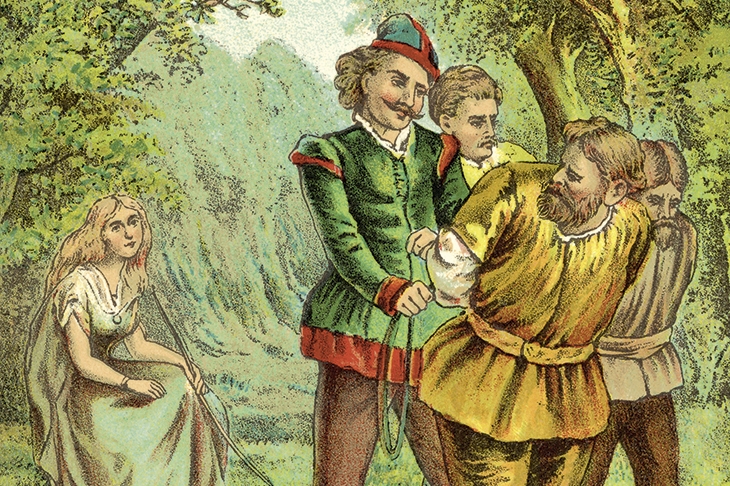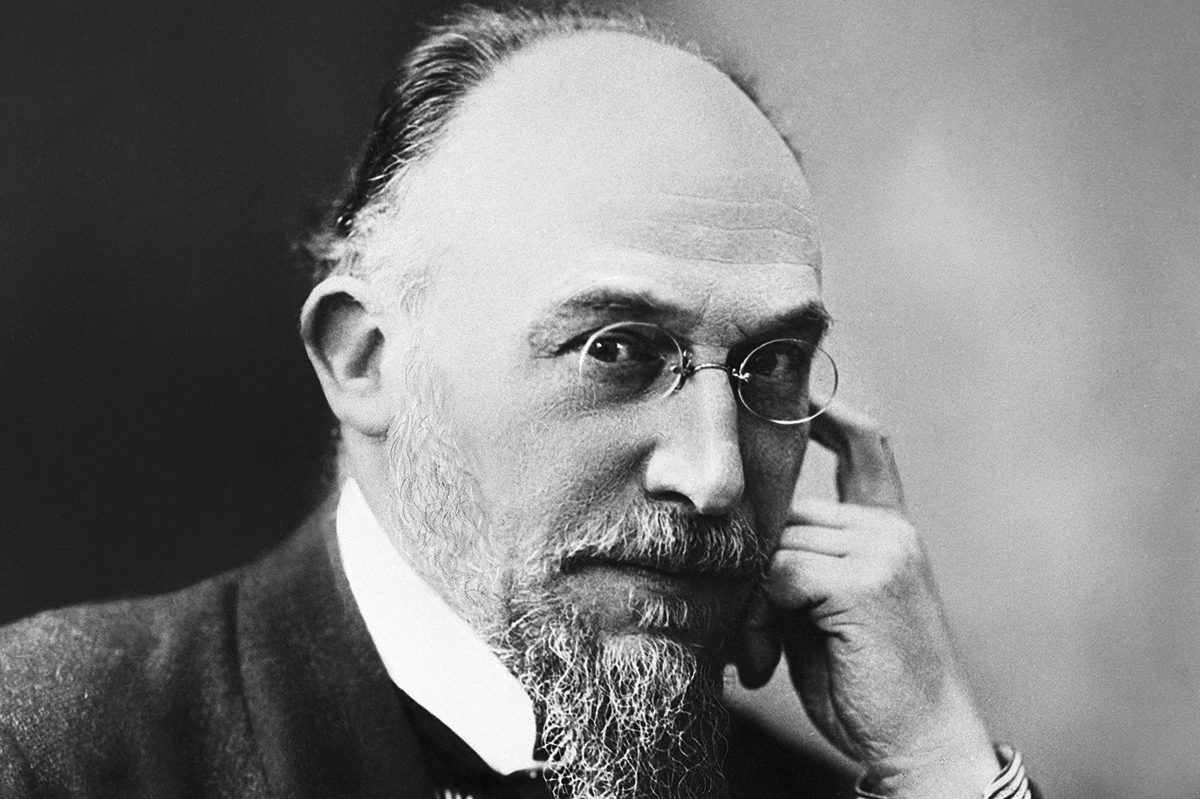Britain’s two most famous legendary figures, King Arthur and Robin Hood, remain enduringly and endearingly elusive, and thus ever-fascinating: Arthur slumbering in the mists of nebulous Avalon, Robin as a hardy perennial somewhere deep in Sherwood Forest. Historians, folklorists, Eng Lit academics and cranks — the list is not mutually exclusive — enter these realms at their peril. When I did so a few years back, a headline in the Sun alarmingly proclaimed: ‘ROBIN HOOD FROM TUNBRIDGE WELLS, SAYS HISTORIAN.’ To put it mildly, that was a rather reductive and misleading summary of my research; but it certainly raised my awareness of being ambushed while ambling along the edenic Greenwood pathways. In her engrossing book on Robin Hood, Lesley Coote also considers a geography beyond Sherwood Forest for the legend: ‘It may have differed according to the area in which the stories were being told.’ It almost certainly did, as I have long argued.
The book’s fascinating focus is on the European-wide literary setting of Robin Hood-type tales in the late medieval, pre-Reformation era. Post-medieval imaginings of Robin Hood are pretty much literary inventions. Indeed, even by the time of the earliest extant written stories of Robin Hood — A Gest of Robyn Hode, arguably from c.1450 — the legend was in all likelihood already some 250 years old — nearly as far away as Dick Turpin is from us today.
Coote rightly recognizes that the folklore originates from at least eight centuries ago. Thus, even this primary source is probably more fictitious than historical. And that befits Robin perfectly, a character who, as Coote explains, undergoes constant cultural reinvention: ‘In relatively recent times, Robin Hood has been depicted as a superhero, a rebel, a war-weary outsider with “issues”, and a hoodie-wearing “lad”.’ Indeed so: in the 2018 film, he is a steampunk environmentalist for the woke generation.
Coote convincingly shows how Robin was adapted to the culture of the late Middle Ages as a variation of the fabliaux, pastourelles and tales that were popular across Europe and which were widely known in England, in which ‘the character of the outlaw and that of the minstrel are blended together in the greenwood storyworld of Robin Hood, and together they become the hero’. The constants remain in our cultural referencing of the hero: the Merry Men, the Sheriff of Nottingham, Sherwood Forest and Robin as the selfless righter of wrongs.
However, these exist with literary certainty only from the later medieval period and may have been recent developments. The likes of Friar Tuck and Maid Marian are even later additions to the story. The name itself tells us little. Coote disconcertingly but interestingly points out that ‘Hood’ may simply be a dialectical pronunciation of ‘wood’. Is nothing sacred? It certainly shouldn’t be — although Adam Thorpe’s modern, vivid portrayal of our hero in his novel Hodd as a potty-mouthed, magic-mushroom-munching heretic is perhaps pushing the boundaries too far out (in every sense). But even by the mid-16th century one Robin Hood play depicts its Maid Marion character as ‘a wagger of bollocks’. Tut-tut, Marion.
[special_offer]
Coote takes us deep into the pious, ribald, scatological and sometimes pornographic tales of the period. From Germany we have the Eulenspiegel, whose picaresque hero delights in defecating in a priest’s bed. In the English ‘Story of the Chamber Pot’, half a dozen characters, including a naughty parson and an unfaithful wife, become stuck to the household item. William Burroughs was at least half a millennium late with his talking anus; here we have garrulous private parts, too. I’ll spare you the charming title of that particular fabliau. The sexual elements range from the puerile ‘small, but very pretty little bunny rabbit’ to the harder-hitting story Cele qui se fist foutre sur la fosse de son mari. (Please do not Google).
Amid all the filth and debauchery, our Robin is quite the clean-cut hero by comparison. However, Coote speculates that there may be lost tales that depict him in a less salubrious light. She also reminds us of his recorded acts of violence and criminal behavior. The original Robin Hood ballads portray him and his men as brutal killers, not flinching at beheading a poor, blameless boy novice. Medieval audiences lapped it up: Coote estimates that some 2,000 printed books on Robin were in circulation c.1500. She explains that his seeming excesses can be excused because he was ‘just a servant’ of the Virgin Mary. (There is a prominent strain of Marian devotion in the Robin Hood tales.) Coote enlighteningly emphasizes the moral message that links all of the tales she discusses.
The book is not a search for the historical origins of Robin Hood but for his literary and cultural foundations. The result is a fascinating and engaging new look at an old legend.
This article was originally published in The Spectator’s UK magazine. Subscribe to the US edition here.

























